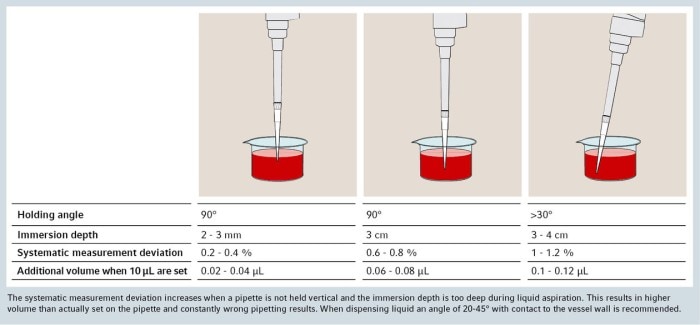MENU
DE | EUR
-
-
-
-
- Forum Labo 2025
- Advanced Therapies Week (ATW) 2025
- SLAS Europe 2025
- Bioprocessing Summit Europe 2025
- Medlab Middle East 2025
- SLAS International 2025
- Biologics World Nordics 2025
- ASIA LABEX: The Lab Show 2025
- BioProcess International Europe 2025
- ISEV 2025
- Future Labs Live 2025
- DataHow Symposium 2025
- Cell 2025
- LabDays 2025
- ILMAC 2025
- ASIA LABEX: The Lab Show 2025
- Stem Cell Community Day 2025
- Nordic Life Science Days 2025
-
-
-
-
- Forum Labo 2025
- Advanced Therapies Week (ATW) 2025
- SLAS Europe 2025
- Bioprocessing Summit Europe 2025
- Medlab Middle East 2025
- SLAS International 2025
- Biologics World Nordics 2025
- ASIA LABEX: The Lab Show 2025
- BioProcess International Europe 2025
- ISEV 2025
- Future Labs Live 2025
- DataHow Symposium 2025
- Cell 2025
- LabDays 2025
- ILMAC 2025
- ASIA LABEX: The Lab Show 2025
- Stem Cell Community Day 2025
- Nordic Life Science Days 2025
DE | EUR
-
- Benchtop Centrifuges
- Floor-Standing Centrifuges
- Refrigerated Centrifuges
- Microcentrifuges
- Multipurpose Centrifuges
- High-Speed Centrifuges
- Ultracentrifuges
- Concentrator
- IVD Products
- High-Speed and Ultracentrifuge Consumables
- Centrifuge Tubes
- Centrifuge Plates
- Device Management Software
- Sample and Information Management
-
- All Pipettes, Dispensers & Automated Liquid Handlers
- Mechanical Pipettes
- Electronic Pipettes
- Multi-Channel Pipettes
- Positive Displacement Pipettes & Dispensers
- Automated Pipetting
- Bottle-Top Dispensers
- Pipette Controllers
- Pipette Tips
- Automation Consumables
- Dispenser & Pipette Accessories
- Automation Accessories
- Dispenser & Pipette Services
No results found
Search Suggestions

How the Choice of Tools Speeds up Your Work
Beyond Science
- Pipetting Techniques
- Essay
- Lab Life
Time-saving work approaches do not always mean that you must rush. Speeding up does not need to mean a reduction in quality of results or reproducibility. If an intelligent decision is made on which tool to use to improve work, speeding up happens automatically. Ideally, reproducibility and result quality are also increased. Furthermore, it is desirable to simplify the steps needed to accomplish the results. This starts with the individual skills of the employee. Since pipetting is the most used technique in labs, a good pipetting technique saves time because experiments do not need repetition caused by inaccurate pipetting.
It makes sense to invest in a pipetting seminar for all employees. This ensures a consistent method of working amongst all employees and ensures that assays are done in the same way no matter who is pipetting. Additionally, thinking about the solutions used and the optimal tool for pipetting these can reduce waiting time e.g. when glycerol is used. Glycerol as a viscous liquid that has a bad flow behavior and is difficult to pipette because one must wait a long time until it is aspirated or dispensed. Even after waiting, it won’t be an accurate pipetting result. So choosing a direct displacement tool facilitates, speeds up, and increases accuracy when working with this liquid.
It makes sense to invest in a pipetting seminar for all employees. This ensures a consistent method of working amongst all employees and ensures that assays are done in the same way no matter who is pipetting. Additionally, thinking about the solutions used and the optimal tool for pipetting these can reduce waiting time e.g. when glycerol is used. Glycerol as a viscous liquid that has a bad flow behavior and is difficult to pipette because one must wait a long time until it is aspirated or dispensed. Even after waiting, it won’t be an accurate pipetting result. So choosing a direct displacement tool facilitates, speeds up, and increases accuracy when working with this liquid.
Read more
Read less

More and more companies are using robots for their routine work. This does not necessarily mean that less employees are needed, but rather that the kind of work employees are doing is shifted from manual work e.g., pipetting, to more of a programming and monitoring function. This guarantees that robots are working correctly and reduces the employees’ workload. It also offers the spare time needed to prepare other experiments, write reports, or improve assays. Furthermore, programming electronic devices speeds up work. An electronic pipette that can be programmed for dilution series can be 10 times faster than a manual pipette where the pipetting volume must be changed after each dispensing step.
As you can see from these examples, many ways exist to speed up work without being rushed. Improvement of pipetting skills, consideration of the correct tools, and an open mind towards electronics improve your everyday working situation and can help to clear your mind from time-consuming repetitive tasks.
As you can see from these examples, many ways exist to speed up work without being rushed. Improvement of pipetting skills, consideration of the correct tools, and an open mind towards electronics improve your everyday working situation and can help to clear your mind from time-consuming repetitive tasks.
Read more
Read less
